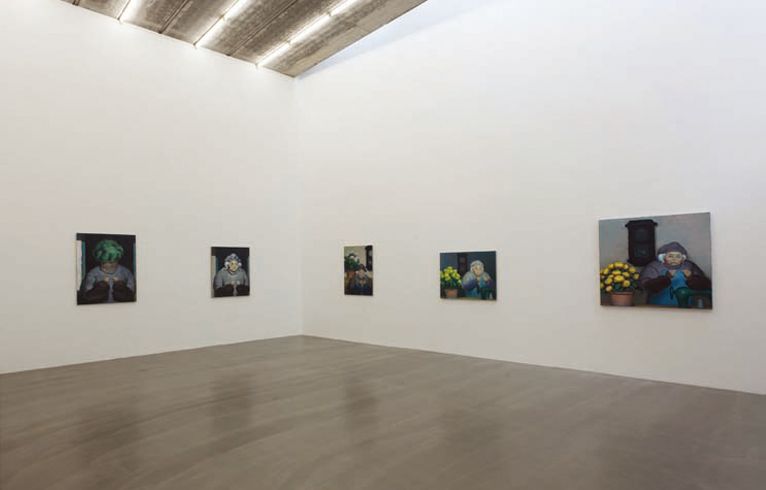WANG XINGWEI
| April 10, 2012 | Post In LEAP 13

Wang Xingwei’s painting is essentially isolated from the critical establishment. His take on art history starting in the mid-1990s was nothing more than a bone tossed to the critics. In the so-called “narrative” paintings that received the most attention, the repetition of the everyday mixed with literary themes of sex, violence, illusion, and death made it easy to forget that these paintings were still, above all, paintings. As Wang sees it, the reasons for establishing a theme and the reasons for creating a painting do not reside in the same dimension. The former springs from “prescience” and direct experience, whereas the objectivity of the latter is a variable of what can and cannot be controlled. Of course, his work possesses relevance to our shared perceptions of life and experience. But its narrative coding does not suggest a readily digestible symbolic significance; instead, it more closely resembles an index, a response to truth, and an instance of design within the structure of painting itself. In this sense, Wang’s paintings are not closed by their concealment and obstruction of a narrative, but rather, open to our systems of perception and experience.
This exhibition presents Wang Xingwei’s attempts in recent years to simplify his work. It is also a summary of one stage of Wang’s clarification of his own creative path and direction of exploration. In “Large Rowboat,” Wang’s 2007 solo exhibition also at Urs Meile, he had already begun to move toward experiments in weaving together various elements of painting itself in a highly ambiguous and dangerous balancing act between form and theme. Here, thematic elements have been further simplified. For example, Wang chooses to represent the physical relationships between himself and the images themselves. He stops short of inquiring into the images’ essence and attempts to keep the physical relationships at a hypothetical level. In the “Old Lady” series, the shape of an elderly woman possesses the air of geometric sculpture. The artist expresses his own experience of observing and digesting this image in symmetry, rich colors, and detailed lines. However, the foundation of this image lies entirely within the space of the painting itself, and the sense of volume and delicate control of space break through both narrative and formal order. Wang precisely arranges the synchronized interference of a half-hidden clock, a potted plant, a balcony, and a washrag in the old woman’s space. At the same time, he attempts to manipulate our paths of observation, provoking our visual inclinations and defenses, in works such as Big Tree by the Film Museum (no. 2). Yet certain subjects highlighted— and thereby attenuated— within the portraits included in the exhibition (such as “the painter” and [television show host] “Bai Yansong”) seem to carry forward Wang’s consistent flexibility. The artist’s most devoted efforts lie in the simultaneous continuation and truncation of the vitality of his lines, the posture and volume of his images, and the response to their most intriguing contents. Compared to previous works, these paintings are more diverse and balanced; their formal simplification leaves their overall logic richer and more complete.
None of these works bear any relationship to spiritual form, nor do they possess any spiritual content— herein lies the divergence between Wang Xingwei’s work and the trends born of Modernist painting. Wang does not pursue spiritual authenticity, nor does he probe the internal worlds and external, liminal ephemera of the dreams of the surrealists. His painterly control constructs the internal quality of the current phase of his work, granting his practice intrinsically contemporary elements. It unintentionally creates artistic reality via a kind of natural parallelism, and unintentionally serves as intermediary between words and objects, form and content, and essence and phenomenon. It is a choice regarding how to work, a choice to passively exercise no judgment, which nonetheless leads to a rather active vision. Su Wei (Translated by Daniel Nieh)

